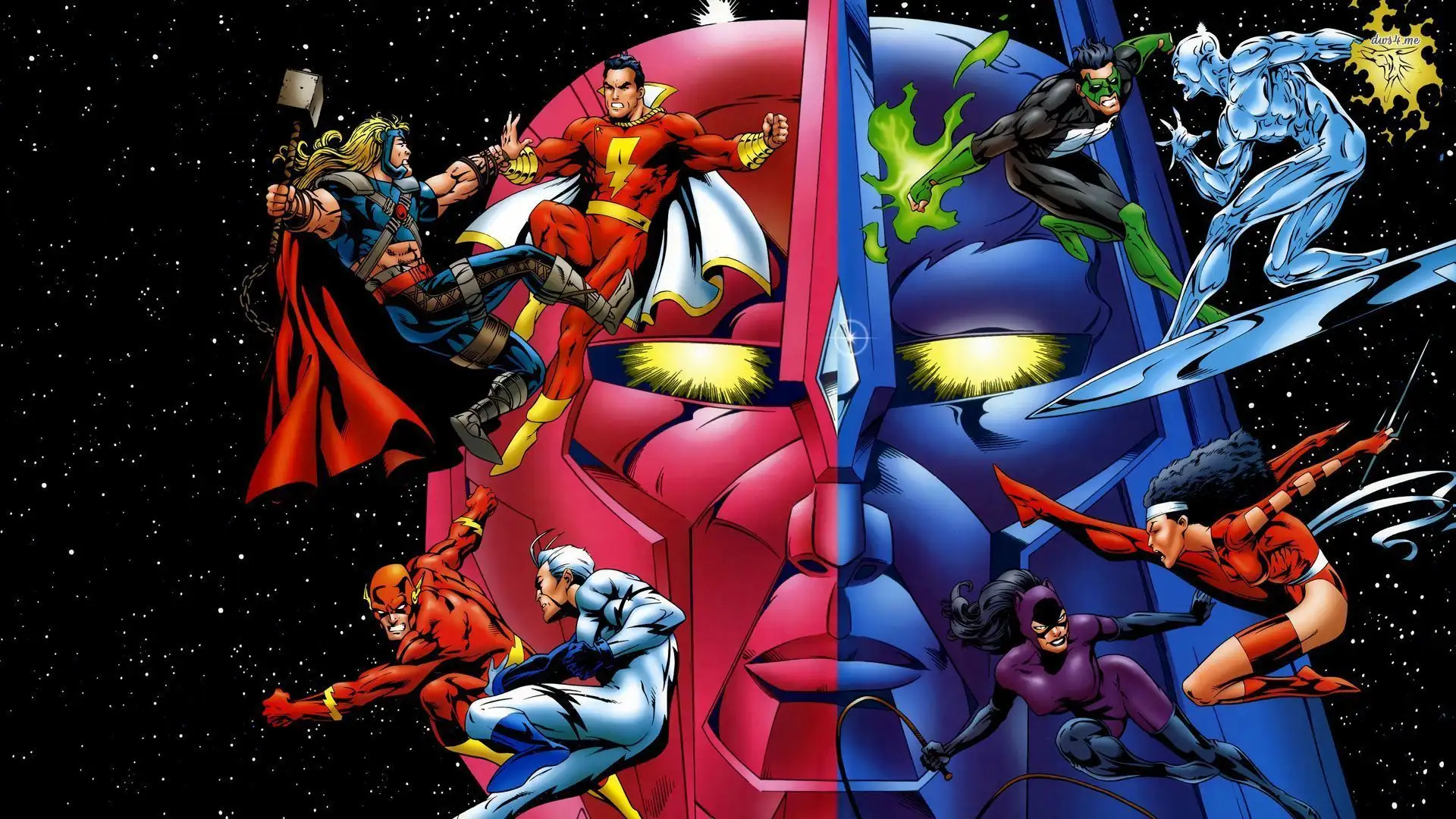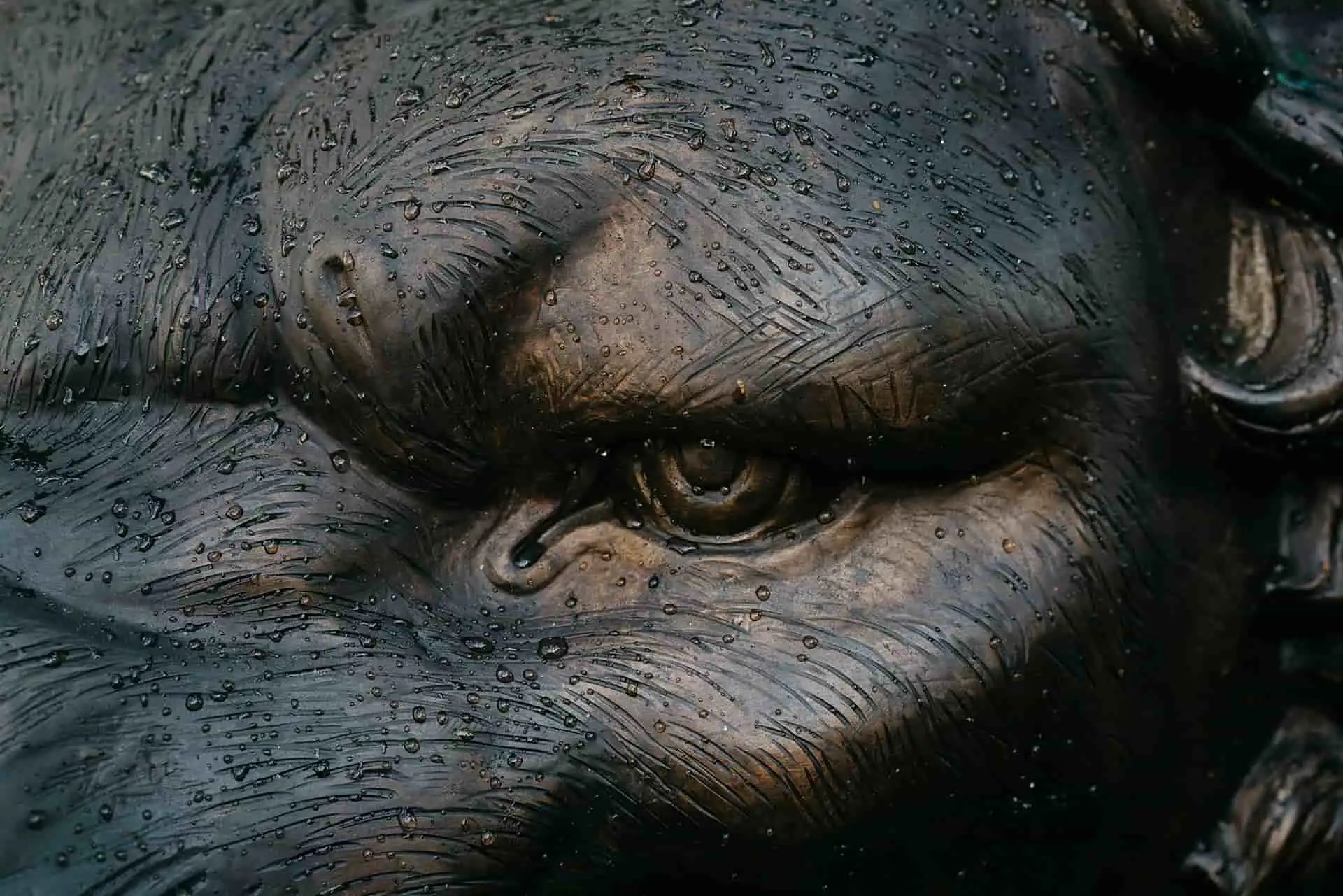
Top 30 Cartoon Characters That Were Villains
Our list rounds up the top 30 cartoon characters that were villains, each one more wonderfully wicked than the last.
Lists
From Gardens of the Moon, it’s clear that the world of Malazan is richer in history and geographic detail, and than any other fantasy world.

Do you make up fantasy worlds in your head and often get lost in them? Or, are you a fan of fantasy books, enthralled by the inked lines, names, and scribbles of well-detailed maps?
Have you ever given thought to how long you could survive in one of these fantasy worlds?
While the strange lands with their mysterious mountains, thriving cultures, and alien races are captivating to explore through the eyes of the narrator, the question remains: could you survive in their shoes?
Here are the top 9 most intriguing fantasy worlds. ever created in books. In descending order, we begin with:

Being such a highly character-driven fantasy world, Westeros and Essos, the backdrop for George R.R. Martin’s epic tale of political intrigue, war, and moral complexity, are expectedly under-utilized.
We watch the drama unfold from the Tullys, Starks, Baratheons, and Targaryens. But we don’t see the land itself. The closest we ever come to it is the Wall. We don’t see the depths of Casterly Rock, only the capital, King’s Landing.
We spend some time in the North and Riverlands, but the Game of Thrones books have, first and foremost, been about the characters.
From the North, ruled by the Starks from Winterfell to the wealthy Westerlands under House Lannister, the stormy Stormlands under House Baratheon, the fertile lands of Highgarden, the sandy dunes of the far south, and the capital, King’s Landing, Westeros is home to diverse climates and landscapes; most spectacular of which is the daunting Wall.
Essos, located across the Narrow Sea, is a vast, exotic land with a mix of powerful city-states and nomadic tribes. It is also the hub of ancient mysteries, home to the Red Priests, followers of R’hllor, and other mystical forces.
There are relatively few major battles in A Song of Ice and Fire, which is quite surprising, especially when compared to smaller series like Lord of the Rings.
Life expectancy in Westeros varies, from the dangers of the North and the Wall through Dorne. It’s not much better on Essos, especially if you’re Dothraki. Regardless, the average isn’t particularly impressive.
Life expectancy: 45 years

Before you have my head, hear me out. The Lord of the Rings is one of the finest exponents in the genre, but the world that so significantly contributed to its status isn’t necessarily the best fantasy world.
That’s no insult to the imagination of arguably the greatest creator of fantasy worlds. It just shows how much the fantasy world creation market has progressed since he pioneered the genre.
Middle-Earth, the central setting of the Lord of the Rings books is a vast, richly imagined world filled with diverse races, ancient kingdoms, and epic battles. Tolkien’s world is steeped in deep history and mythology, making it one of the most iconic fantasy realms ever created.
Tolkien’s creatures are some of the classic stereotypes in fantasy. Whatever spelling or physiology differs depending on the book you’re reading, Tolkien has the original elves, dwarves, and orcs
The life expectancy in the First, Second, and Third Ages are worryingly low. Except you’re one of the Istari or bear a Ring of Power, you can expect to be cannon fodder in one of Sauron’s many wars and proxy conflicts.
Life Expectancy: 27 years

Midkemia, the primary setting of The Riftwar Cycle, is a world brimming with ancient magic, deep political intrigue, and diverse cultures.
Created by Raymond E. Feist, this world is distinctive for its multidimensional scope, as rifts—portals between worlds—allow for travel between Midkemia and other realms like Kelewan. This connection opens up complex storylines involving inter-world warfare, diplomacy, and alliances.
The first story set in the world of Midkemia is Magician, with the tale starting in Crydee on the continent of Triagia.
What makes Midkemia special is its blend of traditional fantasy elements—such as swordplay and magic—with the added complexity of inter-world politics. The Empire Trilogy is a great example of how this dynamically plays out.
The conflicts in Feist’s world are vast in scale, with the intricate political, military, and magical dynamics making Midkemia one of the most fascinating and multifaceted fantasy worlds ever created.
Fear is the little death, daughter. It kills in tiny pieces.
As a regular human in peaceful Crydee, your odds are decent if you can avoid war. However, in other war-torn lands across or the shadowy depths of Kelewan, your chances plummet.
With wars relentlessly fought across Midkemia and across various other realms, you’d at some point be embroiled in these high-stakes confrontations between realms.
To increase your chances, you’d have to be at least as influential as Mara of the Acoma, but then, just one encounter with Tsurani warriors or powerful magicians could end you swiftly and violently.
Unless you possess magical abilities or are highly skilled in combat, surviving in Midkemia for more than a few decades is a tough challenge.
Life expectancy: 40 years

Roshar is a harsh and storm-torn world where extreme weather patterns dictate survival. These high storms, which regularly ravage the land, have forced its inhabitants to adapt in extraordinary ways.
Cities and villages are often built with thick walls and storm shelters designed to withstand the fierce winds and rain.
Roshar is a part of Brandon Sanderson’s wider Cosmere universe. Like Mistborn’s dystopian world of Scadrial and its supernatural mists, Roshar’s geography is distinct and shaped by vibrant climate phenomena.
Roshar also stands out for its range of fascinating races and relentless high storms, powerful, hurricane-like storms that sweep across the land, influencing everything from architecture to biology.
While cities like Urithiru and Kholinar offer protection and a sense of stability, living in more exposed areas is dangerous due to hostile creatures like chasm fiends and the constant threat of storms.
Except you’re a Surgebinder or Voidbinder, you wouldn’t last very long. Even Shardplade doesn’t make you invincible.
Life Expectancy: 37 years
Rick Riordan’s Percy Jackson and Heroes of Olympus create a vibrant fantasy world where ancient mythologies come to life in the modern world.
These stories focus on young demigods, magicians, and heroes navigating both human society and the magical realms of gods and monsters while encountering several mythical creatures.
The world of Percy Jackson is set primarily in a modern-day version of the United States, with secret locations and natural demigod children of the classic Greek gods.
The idea of Camp Half-Blood for Greek demigods on Long Island and Camp Jupiter in California is one of the freshest in the genre, making Rick Riordan’s Percy Jackson books one of the most beloved fantasy novels.
In Riordan’s universe, humans, demigods, gods, and mythical creatures coexist in a dangerous balance, though most humans are unaware of it due to the Mist.
Life expectancy in the world of Percy Jackson depends on whether you’re a mortal, demigod, or immortal being.
As a mortal, you can expect to at least match up to the contemporary standards in life expectancy. However, your chances of survival as a demigod is notoriously short.
Life expectancy: 19 years

Although the adapted TV series Legend of the Seeker only flattered to deceive, it was enough to show just how heavily magic-based the plot in the books is.
The events of the main series occur in the Midlands and D’Hara, worlds with extremely dangerous creatures and even more deadly magic-wielding humans.
What makes Richard Cypher’s world special is how much magic is crammed into all its realms. There are also wizards, sorcerers, Confessors, Mord-Sith spirits, and a host of other creatures straight from the cesspits of fantasy horror.
Terry Goodkind’s heritage of dark fantasy is reflected in the everyday life of common people in the domains of tyrants, where entire villages and cities could be wiped out by magic, and humans lived, bled, and squirmed under brutal fists.
There are just too many biological, political, and magical ways to die in Terry Goodkind’s fantasy world. The life expectancy is depressingly low, and you can also die more than once.
Except you’re the Seeker of Truth (which you’re not), you can expect to meet the Keeper of the Underworld at any time.
Life expectancy: 25 years

Magically hidden somewhere in the Scottish Highlands, Hogwarts School of Witchcraft and Wizardry is one of the most iconic fantasy worlds ever created.
Unlike most of the other worlds in this list, it’s an alternate reality, one coexisting side by side with the real world. Hogwarts, along with its accompanying magical locations, including Hogsmeade and Diagon Alley, is a world of constant wonder for young witches and wizards learning magic.
If The Lord of the Rings was the classic olden fantasy world, Hogwards would be the classic urban equivalent.
The intricately built institution of magic at the heart of the Harry Potter series, along with the social stratification, make life in the magical world of Hogwarts enchanting and dangerous.
However, what makes the fantasy world of Hogwarts truly special is the fictional game of Quidditch. Sheer genius by the author, that.
Caught up in two Wizardarding Wars, your life expectancy as a witch or wizard would depend on whether your parents were Death Eaters or not. You’d also have to be pretty good at spells. But then, even this wouldn’t be enough.
The Order of the Phoenix contained some strong witches and wizards, and even they struggled against the agents of Voldemort’s new order.
Life Expectancy: 35 years

The world of the Wheel of Time is far older than any of its characters, spanning multiple Ages in a repeating cycle of time.
I usually don’t bandy about the word “escape” when describing the effect of fantasy books on the mind. But this series is the first fantasy story whose world truly transported me to its realms.
Randland is special for its numerous nations and ethnic groups, like the Aiel, Sea Folk, and Seanchan. However, it is how each culture richly comes alive on the pages that make the worldbuilding world-class.
Randland’s intricate politics, ancient prophecies, and deep connection to the cyclical nature of time make it one of the most captivating and complex worlds in fantasy literature.
Except you’re a male or female Aes Sedai, you stand at risk of dying from a Trolloc attack, Aiel invasion, or fighting Fades in the Borderlands. It gets worse if you’re in Ghealdan, Arad Doman, or Seanchan.
If you don’t die of some freak accident resulting from the Dark One touching the world, you’ll suffer in many of the overcrowded cities as a refugee. Either way, chances are bleak, even if you’re in proximity of the Dragon Reborn.
Life Expectancy: 23 years

At the summit of our best fantasy worlds list is the world of Malazan, a deeply immersive universe of ancient continents torn apart by war and magic.
The series is known for its intricate plotting, dense world-building, and moral greyness, making it one of the most detailed and ambitious fantasy settings ever created.
Here’s some trivia for you:
Like the author of the series, I can appreciate world-building in unique ways, seeing the setting as clearly as I see flesh and blood because of my background in archaeology. Right from Gardens of the Moon, it’s clear that the world of Malazan is richer in history and geographic detail than any other fantasy world.
The other striking feature of the world of Malazan is the many races that inhabit its vast sprawl of continents. The Imass, Jaghut, Tiste, Forkrul Assail, and K’Chain Che’Malle numbers are arguably the greatest races ever dreamed up in fantasy books.
Unfortunately, life on the continents of the Malazan world is harsh and unpredictable, with the threat of war, rebellion, and magic making survival difficult.
On continents like Genabackis and Seven Cities, war is a constant reality, with entire cities laid to waste and populations displaced. Dangers abound in Assail, Lether, Jacuruku, and Korel. Even on Quon Tali, the average person often lives in poverty, oppressed by ruling empires or powerful warlords.
Even if you’re a Mage, you’re not exempt from risk, and your chances of survival are alarmingly slim
Life Expectancy: 19 years.
Because of the depth of fantasy worlds that continue to be churned out by authors, it has become possible to create wonderful movie adaptations.
While many of these TV adaptations have flattered to deceive, there’s no denying that we’re living in a golden age of storytelling that ought not to be taken for granted.
Whether your favorite fantasy world was misrepresented or not, lovers of original fantasy worlds should be grateful for the privilege of seeing their imaginations come to life.

The Tyrant Overlord. Fantasy buff and avid football fan.

Our list rounds up the top 30 cartoon characters that were villains, each one more wonderfully wicked than the last.

DC is great at making comics and animated movies, while the MCU has the upper hand in its cinematic aspects

Discover the best apps to read books for free in 2025. Access thousands of free e-books and audiobooks on your phone or tablet. ...

There are some outright funny cartoon characters who exist solely to crack you up, loud, hard, and with zero apology.

Things Fall Apart is for the colonizers as well as the colonized, helping to understand the role of colonialism in the realization...

While many of the Nollywood movies on our list are quite old, it’s a testament to the capabilities of the industry’s p...

While this isn’t an exhaustive list, it comprises some of the most popular mythical creatures from around the world.